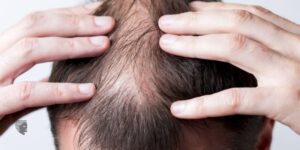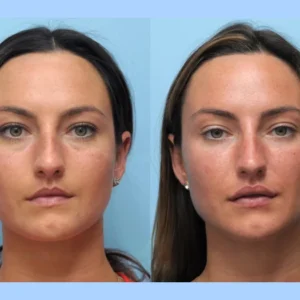Hair loss can be emotionally challenging, no matter your age. Whether it’s caused by genetics, stress, hormonal shifts, or medical conditions, many people—young and old alike—search for solutions that restore their hair and, ultimately, their confidence. One increasingly popular option is front line hair fixing, a non-surgical method that offers a natural appearance and an immediate boost in self-esteem. But the question many people ask before considering this treatment is: Is front line hair fixing safe for all ages?
Before diving into the safety aspects, it’s important to understand what this method entails. Front line hair fixing involves attaching a custom-made hair system—often referred to as a patch or unit—using medical-grade adhesives, clips, or tapes. These systems are designed to seamlessly blend with existing hair, providing a realistic and undetectable look. This technique is widely preferred due to its non-invasive nature and quick results. Among the various places offering this service, Front Line Hair Fixing in Dubai is gaining attention for its advanced techniques and personalized results.

Suitability Across Age Groups
The versatility of front line hair fixing is one of its strongest advantages. It’s suitable for men and women across different age brackets, from teenagers suffering early-onset alopecia to older individuals dealing with age-related thinning. However, the safety and appropriateness can depend on several factors, including skin sensitivity, lifestyle, and underlying medical conditions.
For Teenagers and Young Adults
Hair loss at a young age can lead to significant emotional distress. Teenagers and young adults may not be mentally prepared for permanent solutions like surgical implants. Front line hair fixing provides a non-permanent, reversible option that allows them to regain their confidence without undergoing invasive procedures.
However, since younger skin may be more sensitive, it’s essential to test the adhesives or tapes used in the process. Allergic reactions are rare but possible, especially if someone has a history of dermatitis or other skin conditions. As long as proper care is taken to assess skin sensitivity and hygiene is maintained, front line hair fixing can be safe and effective for this group.
For Adults in Their Prime
Many adults facing hair thinning or pattern baldness opt for front line hair fixing as a practical and efficient solution. This age group often leads active professional and social lives, and the low maintenance requirements of front line hair systems make them an appealing option. The materials used are breathable and skin-friendly, reducing the risk of irritation or discomfort.
In general, adults tend to have stable skin conditions and can tolerate the adhesives better. They’re also more likely to follow aftercare instructions diligently, which further enhances safety and longevity of the hair system.
For Senior Citizens
Older individuals may have more sensitive or thinning skin, which requires extra caution. That said, front line hair fixing is still a viable option for many seniors who are looking for a youthful appearance without going under the knife. The key here is customizing the bonding technique and materials to suit delicate skin types.
For this demographic, it’s advisable to avoid strong adhesives and opt for lighter bonding options or clips. Regular check-ups and professional maintenance can ensure that the system doesn’t cause skin irritation or pressure sores, keeping it both safe and comfortable for older users.
Understanding the Risks
While front line hair fixing is generally safe, it isn’t entirely free of risks. Some potential issues include:
-
Skin Irritation: Caused by adhesives, poor hygiene, or prolonged wear without cleaning.
-
Allergic Reactions: Rare but possible if the individual is sensitive to specific bonding agents.
-
Sweating or Infection: Excessive sweating under the patch, especially in humid climates, can create a breeding ground for bacteria if not cleaned regularly.
-
Poor Maintenance: Neglecting regular upkeep can cause the unit to become unhygienic and uncomfortable.
To mitigate these risks, it’s crucial to follow aftercare routines like gentle cleaning, using hypoallergenic products, and ensuring the scalp is dry and clean before reapplication.

The Psychological Benefits
Aside from physical safety, front line hair fixing also has psychological benefits that span all ages. Boosted confidence, improved self-image, and reduced anxiety are just some of the positive impacts reported by users. This non-invasive method offers instant transformation without the downtime of surgery, making it a favoured option for people seeking fast, reliable results.
Whether it’s a teenager stepping back into the classroom with renewed confidence or a senior citizen attending a family gathering with pride, front line hair fixing has a broad emotional appeal.
Conclusion
In today’s world, where appearance significantly affects self-esteem and social interactions, front line hair fixing serves as a lifeline for those battling hair loss. It is a safe, accessible, and effective solution across a wide age spectrum—provided that personal needs, skin conditions, and lifestyle factors are properly considered. With correct application, quality materials, and good aftercare, this method can offer not only aesthetic improvements but also emotional reassurance.
If you’re considering Front Line Hair Fixing Dubai, it’s essential to consult experienced professionals who can guide you based on your age, hair condition, and expectations. Done correctly, this method can offer safe and stunning results, no matter your age.





